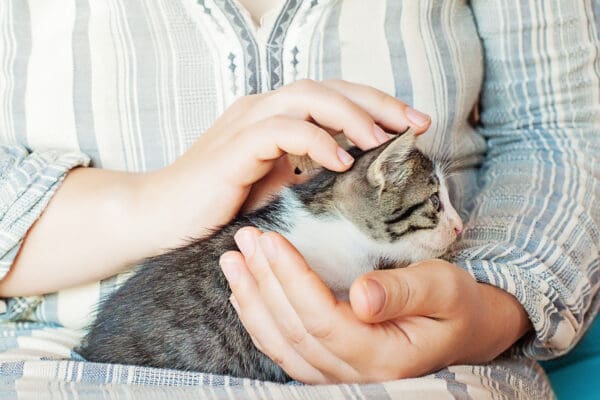
11401 NE 195th St. Bothell, WA 98011
(425) 486-9000 PHONE (425) 486-9002 fax
Notice: Below care sheet is from 2016, and may not reflect up-to-date care information.
Quick facts:
- Scientific name: Petaurus breviceps
- Sugar gliders are small arboreal nocturnal marsupials from Australia and New Guinea. They live in colonies of 6-10 animals, sharing a nest and defending their territory together.
- Adults weight 4-6 ounces and measure about 12” from their nose to the tip of their tail.
- Sugar gliders have a thin membrane that stretches from their wrists to their ankles known as a “patagium” which allows them to glide from branch to branch. They can glide distances of up to 20 meters!
- Wild sugar gliders hunt insects and small vertebrates and feed on the sweet sap of certain species of eucalyptus, acacia and gum trees.
- Sugar gliders have scent glands located on their forehead, chest, and genital area. These are used for marking purposes. These glandular areas of skin are usually hairless, and disappear after sugar gliders are spayed or neutered.
- Sugar gliders have opposable fingers and toes. They also have a specialized toe with two nails on their hind feet that is used for grooming purposes.
- Like other marsupials, female sugar gliders carry their young (joey) in a pouch located in the middle of their abdomens.
- Sugar gliders are capable of a wide repertoire of calls that vary from bird-like chirps to dog-like barking. By far their most extraordinary vocalization is “crabbing,” which they make when disturbed in their nest. Sugar gliders are usually most vocal at night due to their nocturnal lifestyle.
- Although sugar gliders are legal to own in the State of Washington, they are illegal pets in certain other states.
- If well cared for, sugar gliders can live 10-12 years.
Enclosure
Sugar gliders require spacious cages that allow plenty of room for exercise. As they are an arboreal species and love to climb, sugar gliders prefer tall cages. Cages should be made of wire construction, as sugar gliders need to be able to scale the walls easily. Do not use glass aquariums. Wire spacing should be no more than 1”x ½” wide. The cage should be at least 36”L x24”W x 36”T, but bigger is always better! Place the cage in a quiet area of the house away from drafts. Sugar gliders need to be kept at temperatures between 65-90 degrees F, and their ideal temperature range is 75-80 degrees F.
The cage should be furnished with branches and braided flannel ropes of varying widths and altitudes within the cage. Cotton ropes can be used as long as they are not frayed; sugar gliders tend to get caught in loose threads, resulting in serious injuries. Include a few platforms and vertically-oriented branches. A plastic or wooden bird nest box should be placed high in the cage for the sugar glider to sleep in. The nest box can be filled with shredded paper or a recycled paper product (such as CareFresh). Alternatively, flannel pouches can be bought/made and serve as a suitable “nest” substitute. Multiple food dishes and water bottles should be placed in various locations throughout the cage. Nest areas and bedding should be cleaned and changed at least once every other day, and the entire cage should be thoroughly cleaned at least once a week.
Sugar gliders like to hide in dark areas, and tunnels made from PCV pipes are often favorite toys. Some gliders enjoy running in exercise wheels (must have a solid floor, no open rungs). Tame gliders can be let out of their cage to play in the evenings, but they must be supervised at all times to prevent potentially fatal accidents.
Nutrition
Sugar gliders have intricate dietary needs. Contrary to popular belief, they will not stay healthy on a diet of sweet food items only. They need a significant amount of protein in their diet. Currently, there are no commercially available, “complete” sugar glider diets, although some products have been developed that can help provide a nutritional base (such as the High Protein Wombaroo diet).
All Sugar gliders’ diets MUST include:
- Live insects and other protein sources
- Fruits and vegetables
- Nectar or nectar substitutes
- Calcium and Vitamin D3 supplementation
It can be difficult to provide a varied and healthy sugar glider diet. There are several recipes for homemade sugar glider diets available on the internet. Some diets are healthier than others, and some are lacking in essential nutrients. The Bourbon’s Modified Leadbeaters (BML) Mix is one of the most popular and healthy diets available for sugar gliders. However, the BML Mix is NOT a complete diet, and is designed to be fed with a mixture of healthy fruits, vegetables, and insects.
Bourbon’s Modified Leadbeaters (BML) Recipie
- ½ cup Honey
- ¼ cup Apple Juice
- 4 oz. of premixed Mixed Fruit Yogurt Gerber Juice
- 2 jars of chicken baby food (½ oz each)
- 1 Hard boiled egg (leave the shell on)
- ¼ cup Wheat Germ
- ½ cup Mixed Grain or Oatmeal Gerber Baby cereal (dry flakes)
- 2 tsp Rep-Cal (Calcium supplement with Vit. D3 and no phosphorus)
- 1 tsp Herptivite Vitamin Supplement
Blend the honey, egg, and apple juice in a blender until smooth. Turn off the blender and add the Gerber juice and Rep-cal Herpivite Vitamin Supplement. Blend until smooth and then turn off blender. Add the Rep-cal Calcium Supplement, the chicken baby food, wheat germ, and dry baby cereal. Blend until smooth. Pour mixture into ice cube trays, filling each compartment only halfway*, and place into the freezer. (*The volume of a full ice cube in standard ice cube trays equals about 2 Tbsp. This diet should be served in 1 Tbsp. increments, so if frozen in this way, each “BML cube” contains a daily dose.)
Here is an example of a daily diet for 1 sugar glider:
- 1 Tbsp frozen BML mixture (or High Protein Wombaroo mixture, etc.)
- 1 Tbsp of fresh/frozen fruits (apples, bananas, berries, melons, papaya, pineapple, etc.)
- 1 Tbsp of fresh/frozen vegetables (carrots, green beans, corn, sweet potatoes, squash, etc.)
- Few insects (number fed per day depends on size and type of insect)
Feed in the evening and remove food in the morning to avoid spoilage. Always have fresh, clean water available. Never mix vitamins into the water, as vitamins will quickly denature and promote bacterial growth in the water.
DO NOT GIVE your sugar glider chocolate, wild caught insects, fireflies, or treats high in fat/salt.
Behavior
Sugar gliders adapt well to human contact and develop strong relational bonds with their owners. They are communal animals that need the company of another sugar glider to prevent behavioral problems from developing, and should never be housed alone. A minimum of 2 hours of quality human interaction/day is recommended. Because sugar gliders are nocturnal, they are best handled early in the morning or late in the evening.
Health problems
Many of the diseases we see in sugar gliders are due to inappropriate husbandry, and are entirely preventable. We recommend having your sugar glider examined by an exotic animal veterinarian at least once a year to monitor its health status and try to prevent/identify health problems before they become severe. Sugar gliders often hide signs of illness until they are very sick. A yearly exam and blood test can be an extremely useful screening tool for these animals.
Common diseases include:
- Nutritional secondary hyperparathyroidism (metabolic bone disease) – caused by a diet deficient in calcium and/or Vitamin D3; other nutritional deficiencies are also common
- Obesity: due to high fat and/or high protein diets
- Dental disease: common in sugar gliders fed soft, carbohydrate-rich diets
- Self-mutilation: behavioral disorder with many potential causes; often occurs in singly-kept sugar gliders
- Traumatic injury: attacks from other animals or household accidents
- Corneal ulceration: large eyes are prone to injury
- Tumors/Cancer: common in older sugar gliders
March 30, 2015
Content of this Care Sheet Courtesy of:
The Center for Bird and Exotic Animal Medicine
11401 NE 195th St. Bothell, WA 98011
(425) 486-9000 PHONE (425) 486-9002 fax



